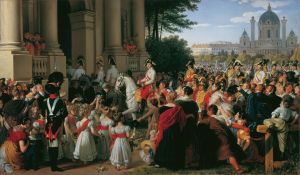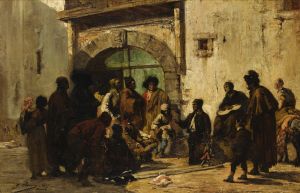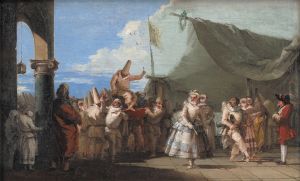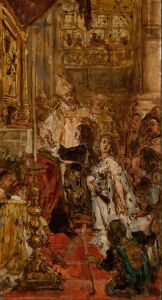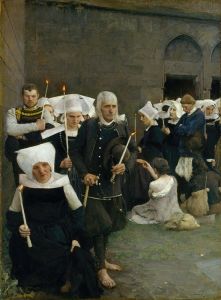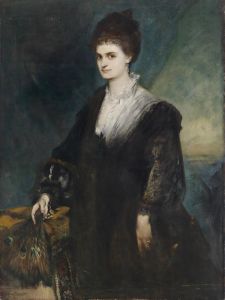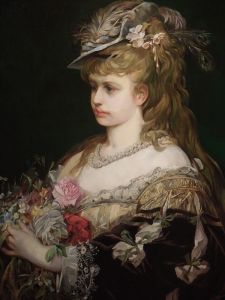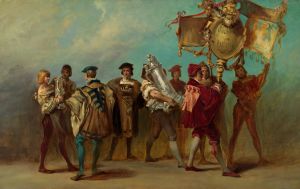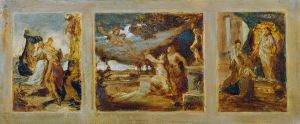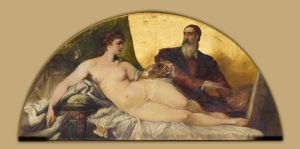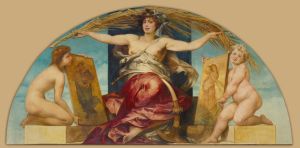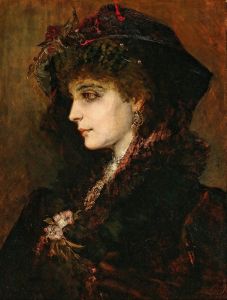
Entwurf zum Festzug 1879 – Die Schlosser
A hand-painted replica of Hans Makart’s masterpiece Entwurf zum Festzug 1879 – Die Schlosser, meticulously crafted by professional artists to capture the true essence of the original. Each piece is created with museum-quality canvas and rare mineral pigments, carefully painted by experienced artists with delicate brushstrokes and rich, layered colors to perfectly recreate the texture of the original artwork. Unlike machine-printed reproductions, this hand-painted version brings the painting to life, infused with the artist’s emotions and skill in every stroke. Whether for personal collection or home decoration, it instantly elevates the artistic atmosphere of any space.
Hans Makart was an Austrian painter known for his vibrant and dramatic works that often depicted historical and allegorical themes. One of his notable works is "Entwurf zum Festzug 1879 – Die Schlosser," which translates to "Design for the Parade 1879 – The Locksmiths." This painting is part of a series of designs created by Makart for a grand parade held in Vienna in 1879 to celebrate the silver wedding anniversary of Emperor Franz Joseph I and Empress Elisabeth of Austria.
The parade, known as the "Makart Parade," was a significant cultural event in Vienna, showcasing the city's artistic and cultural heritage. Makart was commissioned to design the parade, and he created a series of paintings and sketches that depicted various trades and guilds, each represented in a grand and theatrical manner. "Die Schlosser" specifically represents the locksmiths' guild, one of the many trades that were part of the parade.
Makart's design for the locksmiths is characterized by his typical use of rich colors and dynamic composition. The painting likely features figures dressed in elaborate costumes, possibly engaged in activities related to their trade, such as working with locks and keys. Makart's attention to detail and his ability to capture the essence of the guilds he portrayed were instrumental in bringing the parade to life, making it a memorable event for the citizens of Vienna.
The "Makart Parade" was not only a celebration of the imperial couple's anniversary but also a showcase of Vienna's cultural and artistic achievements. It reflected the city's pride in its craftsmanship and the importance of various trades in its economic and social fabric. Makart's involvement in the parade solidified his status as one of the leading artists of his time, and his designs were praised for their creativity and grandeur.
Hans Makart's work, including "Entwurf zum Festzug 1879 – Die Schlosser," is often associated with the historicism movement, which sought to revive and reinterpret historical styles and subjects. His paintings are known for their opulent style, often incorporating elements of the Baroque and Rococo periods, which were popular in Vienna during the late 19th century.
Today, Makart's works, including his designs for the 1879 parade, are appreciated for their artistic merit and their role in documenting a significant cultural event in Austrian history. They offer insight into the artistic trends of the time and the ways in which art was used to celebrate and commemorate important occasions. Makart's legacy continues to influence artists and is studied for its contribution to the development of Austrian art in the 19th century.





